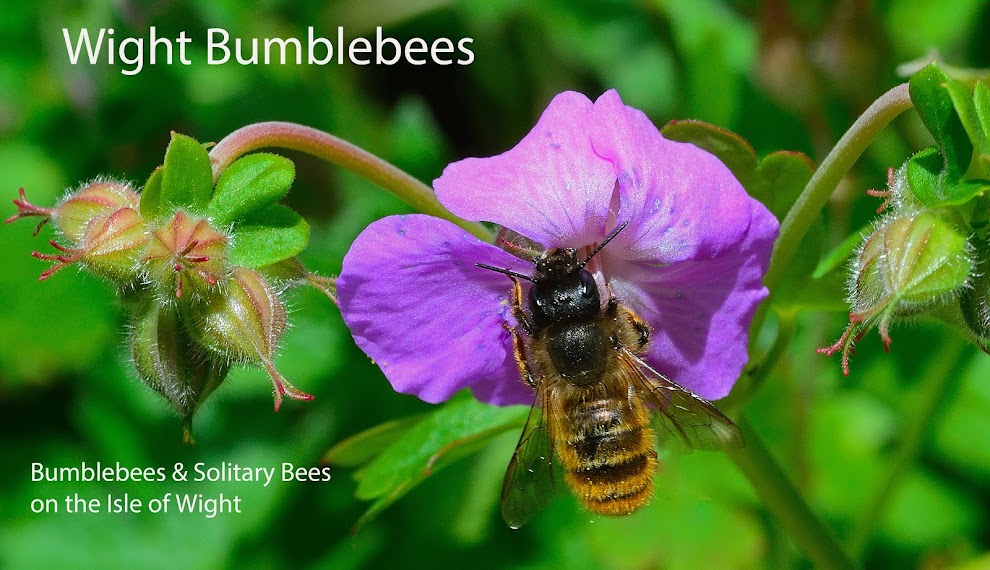Despite the cloudy damp weather this morning the drift of Bugle flowers outside my back door attracted my first sighting of a male Hairy-footed Flower Bee Anthophora plumipes.
Title Photo
A male Red Mason Bee at Freshwater Bay.
Tuesday 22 April 2014
Friday 18 April 2014
Gold-fringed Mason Bee
The Isle of Wight has an abundance of chalk downland and this mason bee,Qsmia aurulenta,is found here and all along the southern coasts of England and Wales.
This small bee is seen from April to August and is well known for nesting in old snail shells.
Thursday 17 April 2014
Bombus hortorum
The Garden Bumblebee,Bombus hortorum,is distinguished from the similar looking Bombus jonellus,by the shape of the head.
The bumblebee below has been confirmed by this method as a Bombus hortorum and I am grateful to Adam Wright of the Isle of Wight Natural History & Archaeological Society for his continued help in bumblebee identification.
Hairy-footed Flower Bee.
There is an extensive drift of Bugle flowers in my garden and is very popular with the bees.Among the visitors are several Hairy-footed(or furry-footed) Flower Bees,Anthophora plumipes.
Although not a true bumblebee it is about the size of a small bumble.The males are rather gingery in colour whereas the females are black with yellowish hind legs.They tend to be very fast flyers.
Thursday 10 April 2014
Bombus hortorum or Bombus jonellus
Again on my garden fence this morning were several bumblebees enjoying the morning sunshine.
This particular bumblebee caught my eye as it seemed to display two yellow bands on its thorax as opposed to the one band on the species Bombus terrestris and Bombus lucorum.This would indicate therefore that the bumblebee is the Garden Bombus hortorum or the Heath Bombus jonellus as both have the two bands.
This particular bumblebee caught my eye as it seemed to display two yellow bands on its thorax as opposed to the one band on the species Bombus terrestris and Bombus lucorum.This would indicate therefore that the bumblebee is the Garden Bombus hortorum or the Heath Bombus jonellus as both have the two bands.
A definite identification is normally seen in the shape of the face,more or less rounded in the case of the jonellus whereas hortorum is elongated.
Tuesday 8 April 2014
Cliff Mining Bee
The Cliff Mining Bee Andrena thoracica excavate their nests in sandy soils.This female was seen in my garden today on pear tree blossom and as they have short tongues,unlike bumblebees that have long ones,they are restricted to the type of flower they can visit
This species is found all along the southern coast of Britain where the coastal cliffs provide nesting sites and as my garden is only a couple of hundred metres from the shore there must be ideal habitat close by.
Thursday 3 April 2014
A Popular Spot.
I have found that my garden fence is a very popular place for bumblebees and indeed other insects to sun themselves.It faces towards the morning sun so is a good spot to warm up.
Today several bumblebees were making use of it including Red-tailed and a Buff or White-tailed worker.
Subscribe to:
Posts (Atom)
















